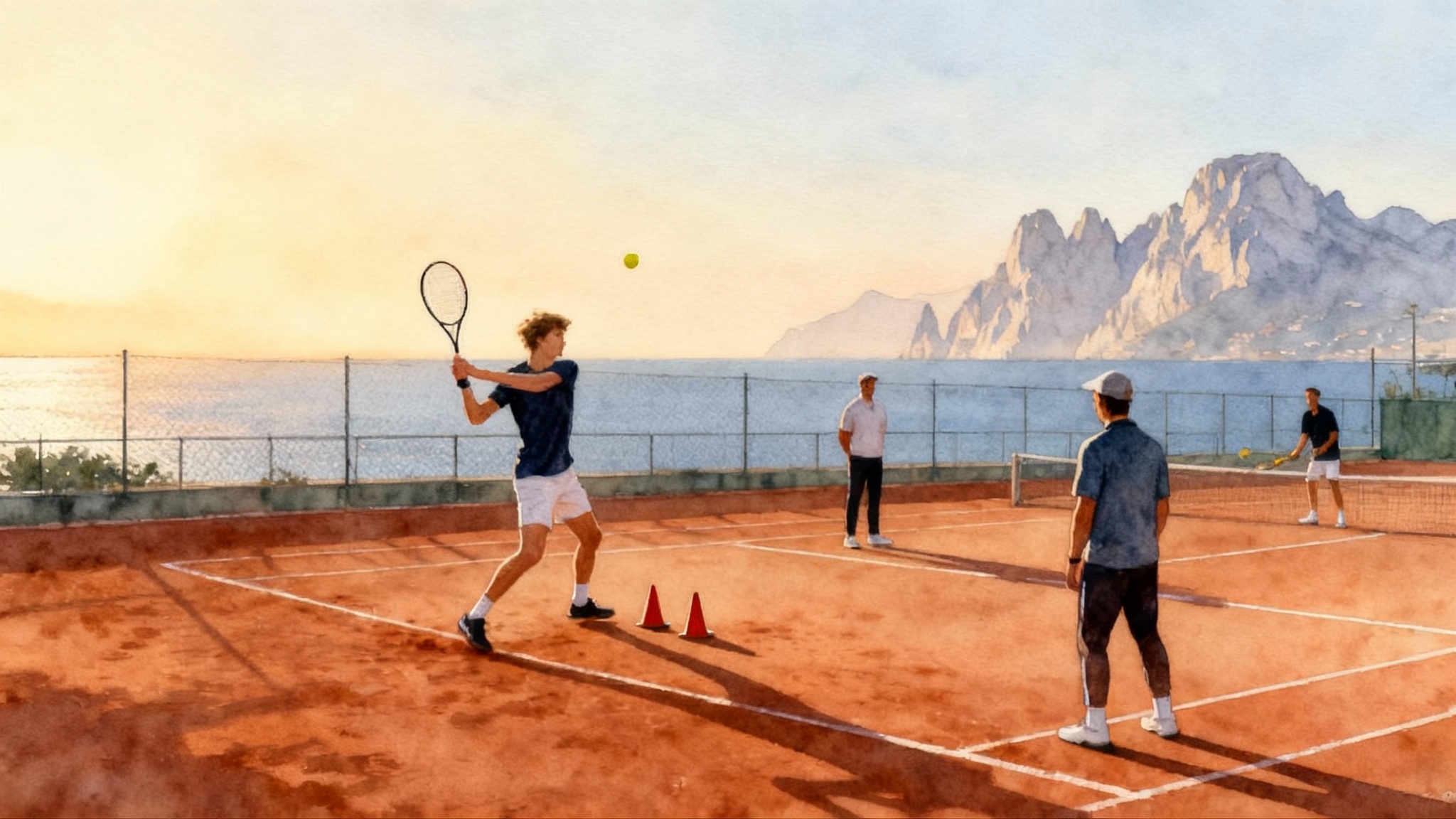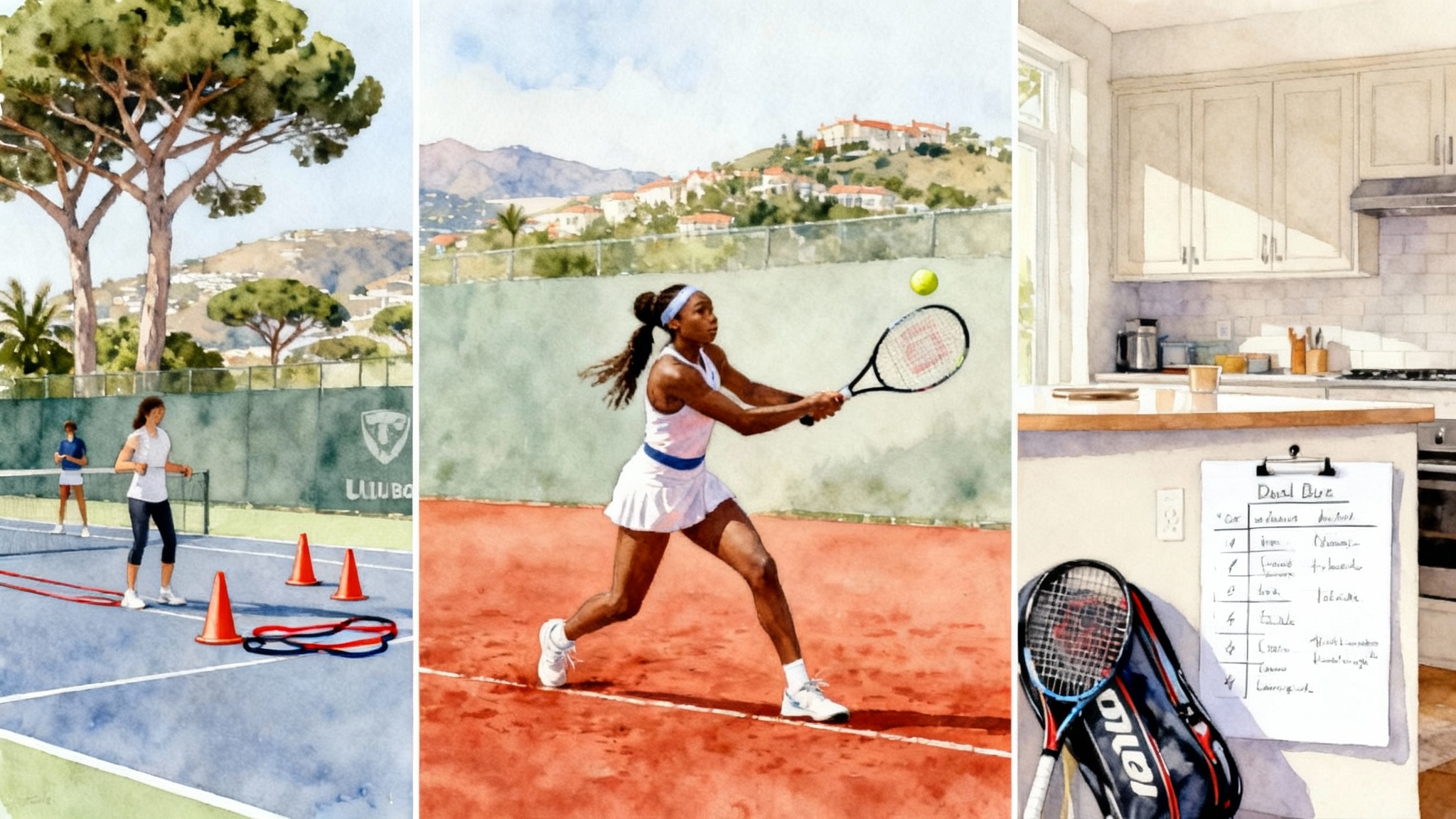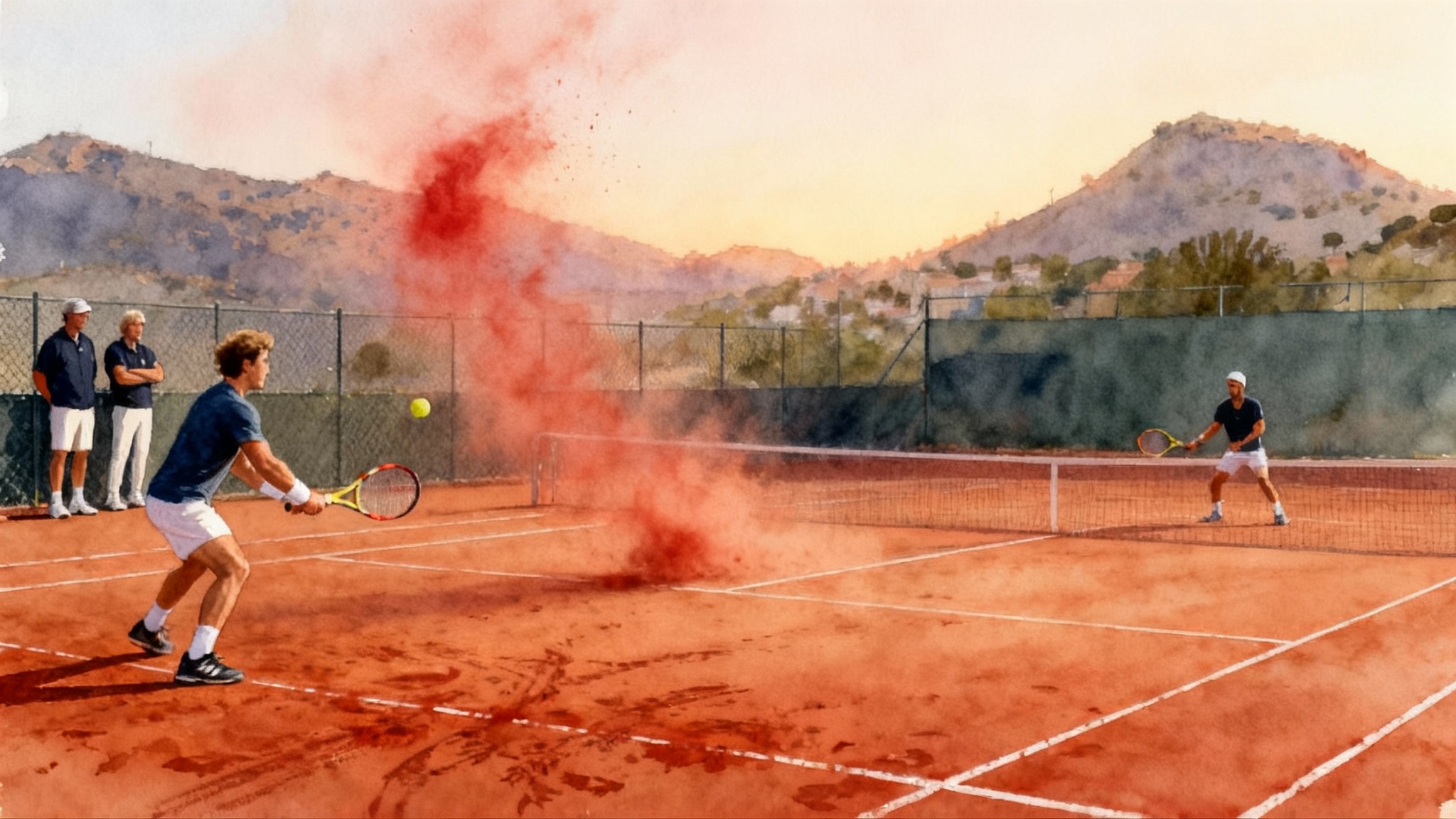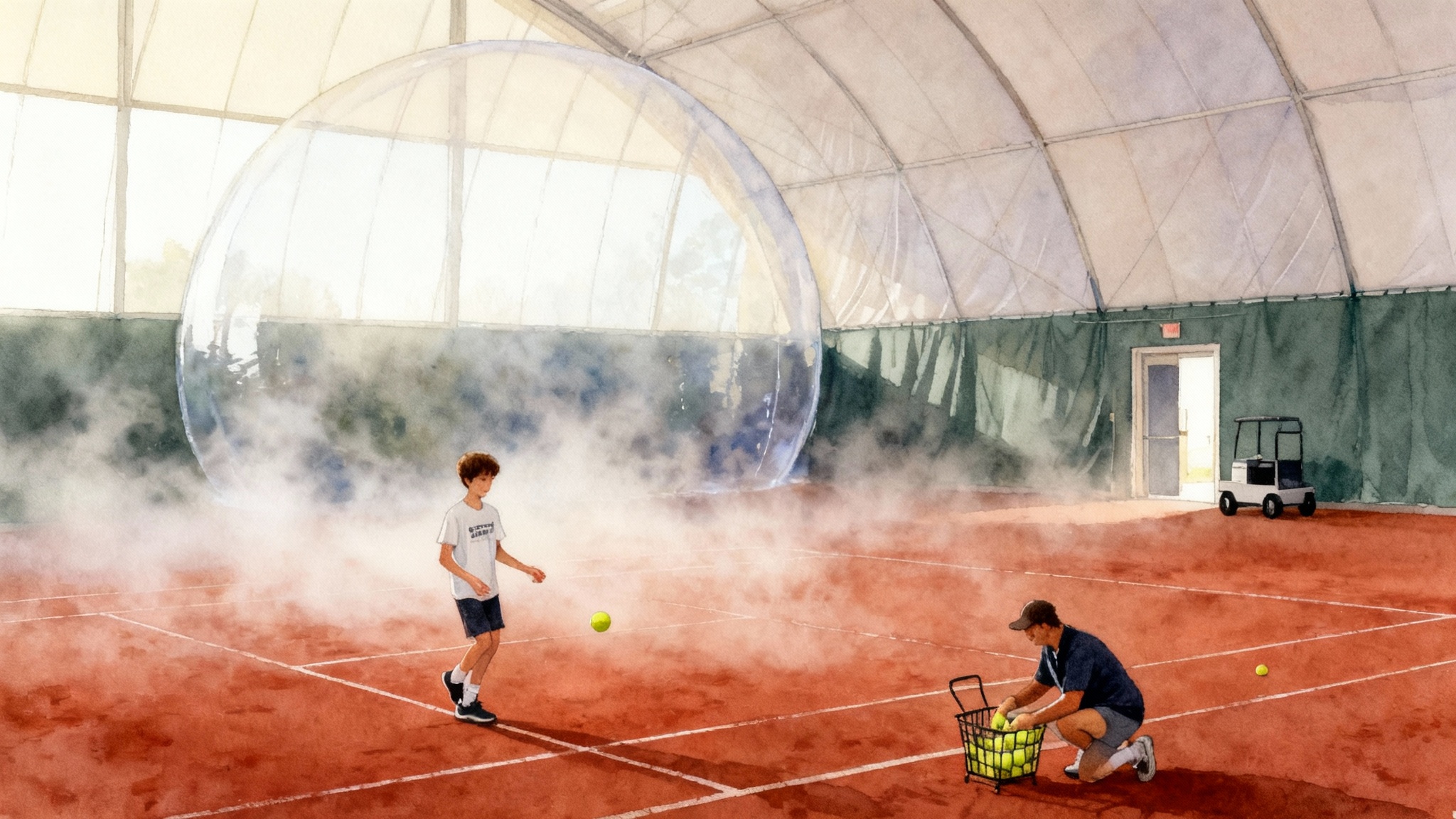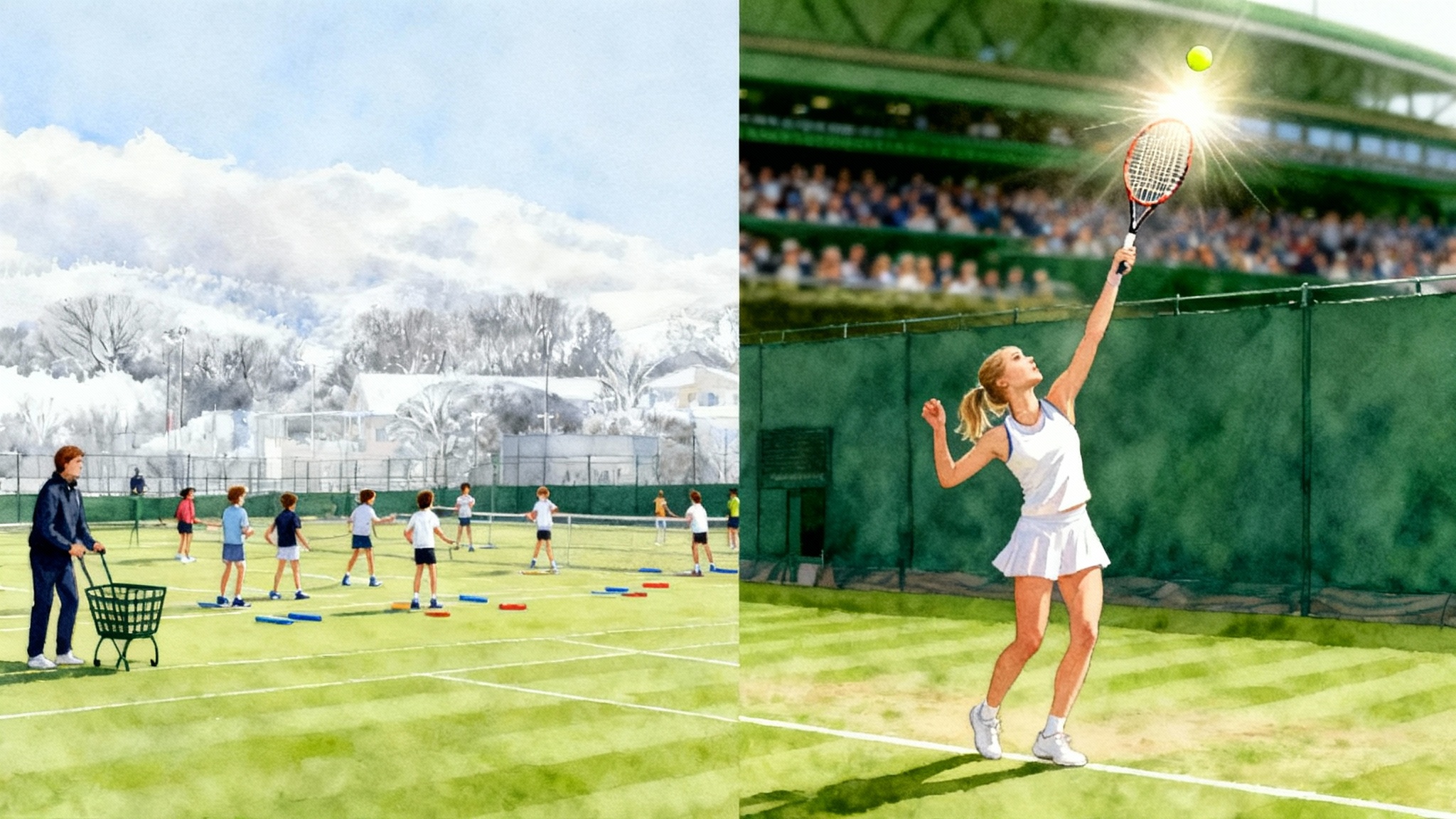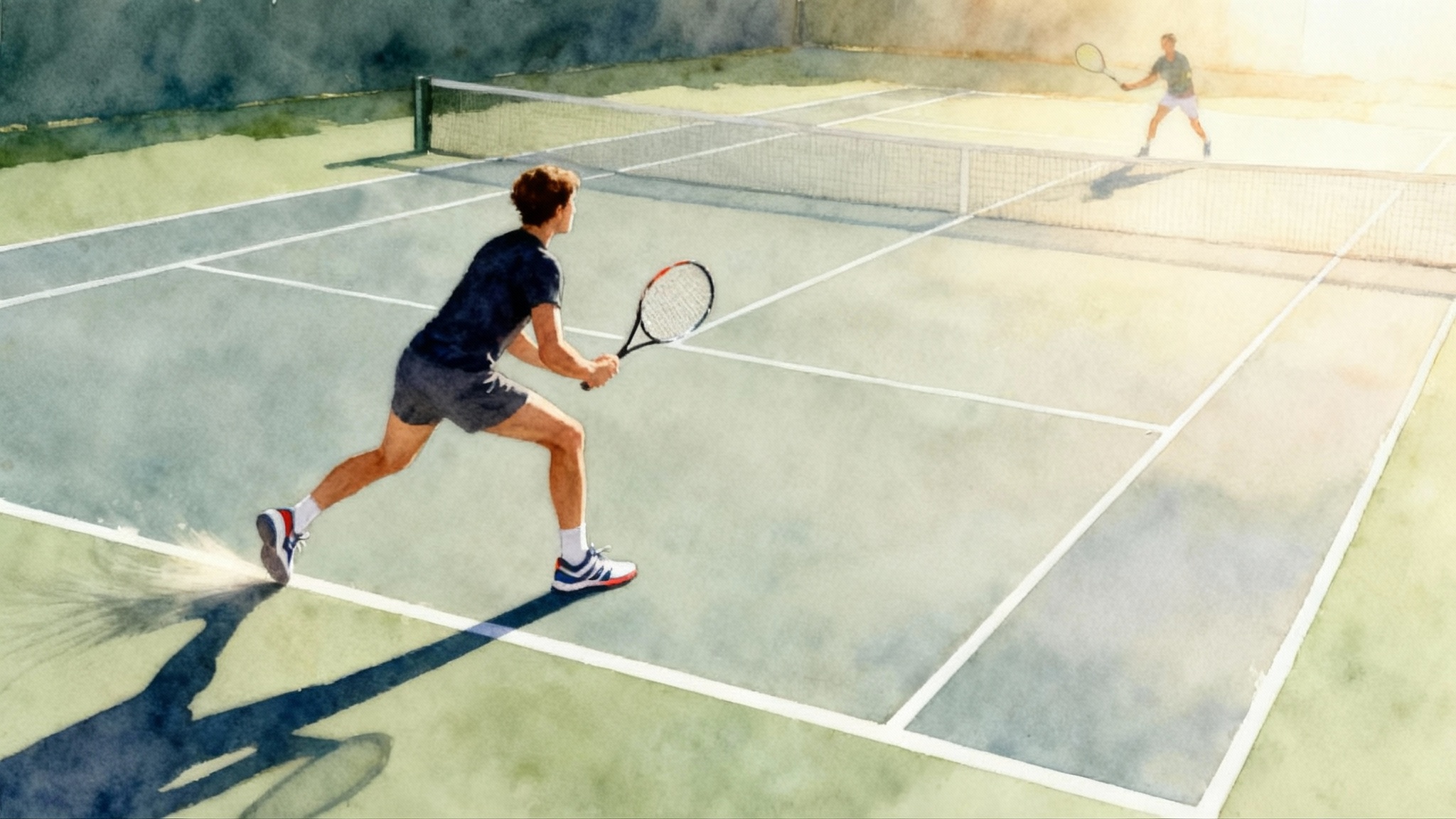From Murcia to Villena: How Equelite Forged Carlos Alcaraz
At 15, Carlos Alcaraz left home in Murcia for Juan Carlos Ferrero’s Equelite Academy in Villena. Inside the mentoring, periodized training, multi-surface reps, and smart scheduling that built an all-court Grand Slam champion, plus practical advice for families.
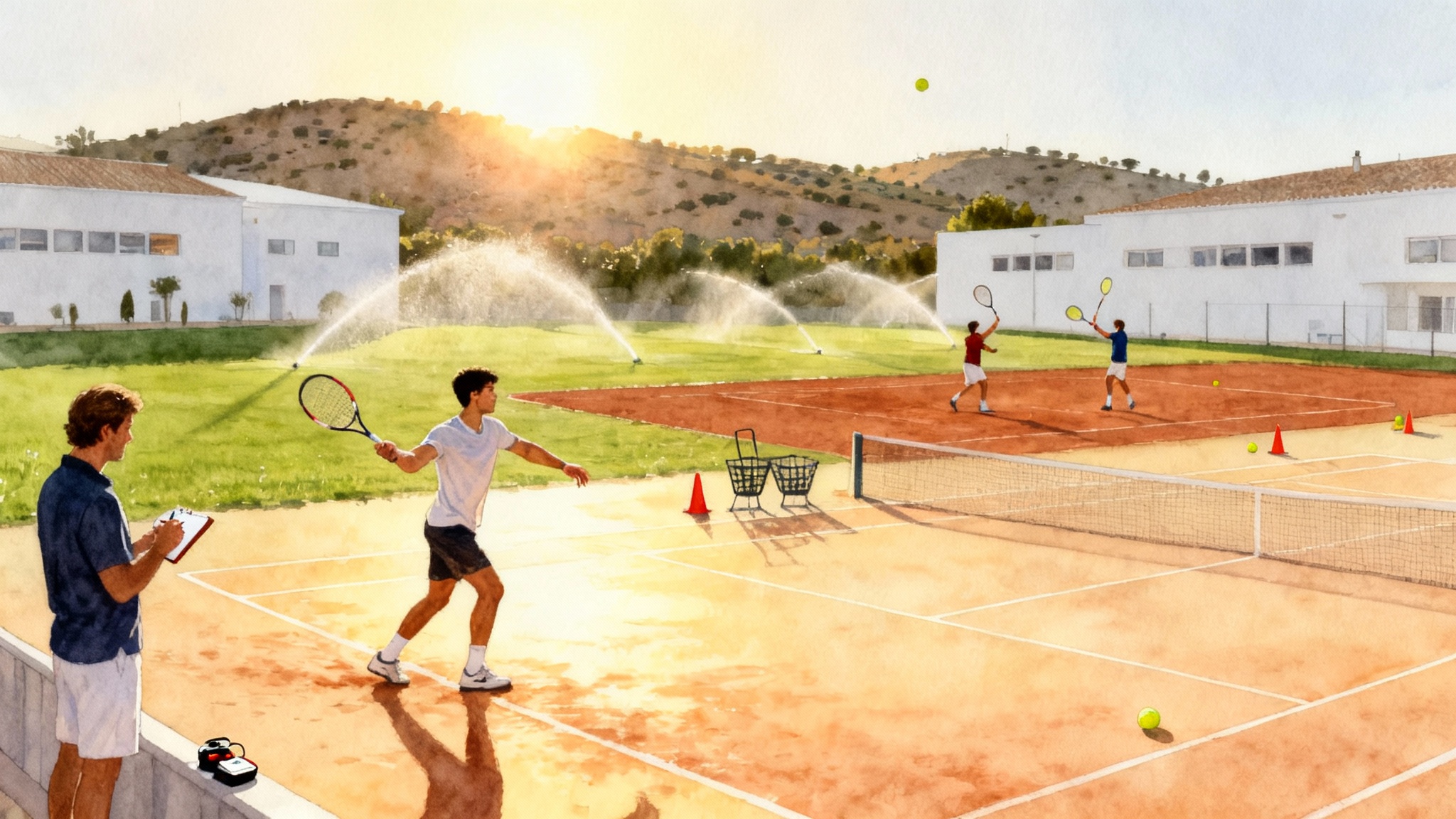
From El Palmar to Villena: one decisive move
Carlos Alcaraz grew up in El Palmar, Murcia, hitting balls at his family’s club and quickly outgrowing the level around him. The turning point came as he approached his fifteenth birthday. In August 2018, Equelite announced that former world No. 1 Juan Carlos Ferrero would begin guiding a fifteen-year-old Alcaraz while the teenager kept ties with his Murcia coaches. The message was clear. The next stage would happen in Villena, at Equelite, where the boy’s potential could be built into world-class performance without rushing his life off court. Ferrero to coach Alcaraz.
That move matters because environment is not a backdrop in player development. It is the program. Villena provided three ingredients Alcaraz could not replicate at home on a daily basis: stronger practice partners, a coach who had lived every step of a top career, and a setting designed to load the right repetitions at the right time. You can see similar environment-driven gains in how Piatti Academy forged Sinner.
What Ferrero saw, and how he built the plan
Ferrero did not try to turn Alcaraz into a copy of anyone. He saw a competitor who loved to take the ball early, attack with the forehand, and finish points at the net. The job was to sharpen those strengths while building a body and mind that could survive five-set matches on clay, grass, and hard courts. The method revolved around three pillars.
-
Mentoring that sets standards. Ferrero’s biggest contribution was not a secret drill. It was daily judgment. He had lived the reality Alcaraz was aiming for, so he knew when to push and when to pull back. If a fifteen-year-old’s forehand winner count is high, but he fades at the two-hour mark, the priority is not a new forehand trick. It is fitness, footwork, and emotional control inside rallies. Mentoring was the filter that sequenced what to improve and when.
-
Periodized training rather than endless intensity. Periodization is the calendar version of common sense. You cannot peak every week. At Equelite, work blocks were built as cycles. Macrocycles framed six to ten weeks around a competition goal. Mesocycles stacked three to four weeks that alternated heavy work, consolidation, and deload. Microcycles broke a week into themes: lower-body strength on Monday, change-of-direction and serve on Tuesday, aerobic base on Wednesday, live-ball high intensity on Thursday, tactical sets on Friday, and match play on the weekend. The outcome was simple to see and hard to fake: week by week, Alcaraz could hit just as big on Friday as on Tuesday.
-
Multi-surface habits baked in early. Alcaraz did not learn grass tennis at the last minute. He practiced grass court instincts years before playing his first full grass season. Taking the ball on the rise, shortening the backswing on skidding balls, and closing forward after a deep approach were treated as normal, not exotic. That is how an all-court identity becomes reflex, not a temporary disguise.
The Equelite environment, explained by surfaces
Walk around Equelite and you can read the academy’s curriculum in concrete and clay. Villena’s campus includes clay courts, multiple outdoor hard courts, an indoor hard court for controlled tempo, and a real grass court. The point is not variety for its own sake. Each surface forces specific footwork and timing adjustments, so rotating surfaces turns one player into several better versions of himself. A heavier practice ball on slow clay can train patience and depth. A quicker hard court sharpens first-strike patterns and return positioning. Short sessions on grass engrain low center of gravity and early racquet preparation. The academy publishes its facilities openly, including a grass court and a mix of clay and hard courts. Equelite courts and facilities.
Facilities also signal priorities. An on-site gym reduces friction between tennis and strength work. Study rooms and a school partnership keep education flowing, which lowers family stress and keeps players at the academy instead of commuting. A physio room next to the courts means an ache is treated before it becomes an injury. None of these features are glamorous, but they are why training stays consistent for months.
Scheduling as a skill: from juniors to Challenger to Association of Tennis Professionals
Ferrero’s team treated the calendar like a portfolio. Early on, Alcaraz played national events and select International Tennis Federation Futures to learn the weekly grind. Next came a tight cluster of Spanish and European Challenger events, which deliver professional intensity without the travel drag of a global tour. The academy even hosts an annual Challenger on site, which allows staff to control logistics and build competitive rhythm close to home.
The team then chose specific Association of Tennis Professionals events to accelerate learning without gambling on chaos. Instead of chasing points at every stop, they targeted a handful of weeks where conditions fit his game and where quality practice partners were guaranteed. That approach delivered two wins at the highest level early in his career: his first tour title in Umag and his first Masters 1000 title in Miami. Those results were not lucky breaks. They were the test week at the end of a training block. You can see this patient escalation mirrored in how Pilic's academy forged Djokovic.
If you zoom in on any single decision, the choices look conservative. Zoom out six months and the progress is aggressive. That is the paradox of good scheduling. You protect the development curve in the short term to unlock big jumps in the long term.
Building an all-court, attacking style
Watch Alcaraz now and you can reverse engineer the Villena blueprint.
- Court position. He plays close to the baseline by default. That compresses the opponent’s time and turns neutral balls into chances to attack. Training blocks on quicker hard courts made this feel natural.
- Forehand as the point guard. Equelite refined his inside-out and inside-in forehand patterns with simple constraints. For example, a live-ball set might award two points for any rally that ends with a forehand winner struck inside the baseline after moving around a backhand. By rewarding behaviors rather than shot types, the drill teaches decision making under pressure.
- Backhand down the line as the release valve. When opponents sit on the forehand, the backhand down the line resets the geometry. Short, frequent reps on clay forced precise footwork before loading to the line, while hard-court reps emphasized taking the ball early to steal time.
- Return plus first step. On faster surfaces, the first step after contact is everything. Equelite often set up returns with cones or tape targets and measured recovery to the split step with a stopwatch. The goal was not a perfect return. It was a playable next ball that kept the point on his terms. For the building block behind this habit, see our Split-Step mastery footwork.
- Forward finishes. A good approach is often the product of a great prior shot. Villena ingrained the habit of closing forward after any deep cross-court that pushes a rival outside the doubles alley. That is why Alcaraz’s net finishes look obvious. They were rehearsed hundreds of times per week.
- The drop shot as a stance changer, not a trick. Because he stands close to the baseline, the drop shot is a natural counter to deep defense. Equelite framed it as a pattern rather than a party piece. Hit heavy cross-court to stretch, then show the same takeback and carve the ball short when the opponent’s first step retreats. The intention is to change the opponent’s stance, not to go for a highlight.
What families can copy from the Equelite model
Every player is different, but the mechanisms that helped in Villena translate well for families and coaches.
1) When to consider a boarding academy
- Outgrow the local greenhouse. If your player dominates sparring and cannot find two or three practice partners who regularly stretch them, the ceiling is near. That is a sign to sample a week or two at a boarding academy.
- Training volume test. If the player can handle 12 to 15 hours of combined tennis and physical work per week for four consecutive weeks without breaking down or slipping at school, they are ready to benefit from a residential program.
- Life readiness. Boarding is not just more tennis. It is laundry, scheduling, and self-management. If daily chores provoke meltdowns, add responsibility at home first. A mature fourteen to sixteen-year-old can thrive. A talented but overwhelmed thirteen-year-old may need a hybrid plan.
2) How to evaluate coaching fit
- Start with a trial block. Book a seven to ten day stay with two coaches observing. Good academies will share a written plan for the week within 48 hours that names two priorities and the drills to target them.
- Demand feedback you can replay. Ask for annotated video clips and a two-minute voice note after every third session. If the explanations are clear enough that a grandparent could follow them, the coach understands the goal.
- Watch the court ratio. A rule of thumb: one expert coach for every three to four players in key sessions, with an additional hitting partner available. Anything looser is fitness disguised as coaching.
- Ask about tournament planning. A credible academy should outline the next eight to twelve weeks, including target events, expected travel days, preparation blocks, and the performance standards that trigger a level-up.
- Clarify school support. Confirm class schedules, study halls, exam coordination, and the staff member who solves academic snags. Tennis progress stalls quickly if school becomes chaos.
3) How to build the support team
- Choose one lead voice. The lead coach should integrate inputs from the strength coach, physio, and mental skills specialist. Families should know who has the final say each week.
- Track loads, not just soreness. Ask the academy to log on-court minutes, high-intensity points, gym sets, and sleep hours. If the player’s accuracy drops late in the week, adjust loads before injury forces the lesson.
- Standardize recovery. A simple rhythm works: nutrition within 30 minutes of practice, mobility work in the evening, cold or contrast showers after the heaviest days, and one screen-free hour before bed.
- Set a communication cadence. A fifteen-minute call every Sunday among family, lead coach, and player prevents small issues from becoming big ones.
Smart scheduling, step by step
Here is a framework you can adopt, inspired by how Alcaraz climbed from juniors to the main tour.
- Define a six-week block with one competition goal. For instance, two national tournaments and one international event of the same surface.
- Protect two build weeks beforehand. Lift three days, do on-court speed twice, and play live-ball sets on the competition surface.
- Slot a confidence event first. Choose a draw where your player can win matches and rehearse patterns at competitive speed.
- Add one stretch event next. Select a tournament one level up or with a tougher field but minimal travel.
- Finish with an event that matches the next skill you want to test. If the goal is earlier court position, play a faster court event. If the goal is patience and depth, choose slower clay.
- Schedule a deload week after the block. That means fewer hours, but sharp, short sessions to bank what the player learned.
The key principle is to earn each level rather than buy it with flights. When performances at your current level are consistently strong, move up. When they are not, stay put and train.
Equelite’s pipeline and why it matters
One academy does not build a champion by accident. It builds a system and then repeats it. Equelite’s campus hosts a professional Challenger each year, which puts aspiring pros and top juniors in contact with the speed and precision of the pro game while they sleep in their own beds. The facilities page lists world-class players who use Villena as a base, including Carlos Alcaraz and Pablo Carreño, which keeps the daily standard high for younger cohorts. That combination of multi-surface courts, integrated schooling, and proximity to professional events is a repeatable model that other academies try to mimic.
For families, the lesson is not to chase a brand name. It is to chase a structure. Look for a place where the training plan, surfaces, logistics, and calendar actually line up with how the pro game is played. If that alignment is present, the location will matter far less than the daily choices you make there.
The bigger picture
Alcaraz’s rise did not come from a single magic drill. It came from a series of aligned decisions that started when he left Murcia at 15 and settled into a routine in Villena. A mentor with clear standards. A periodized plan that respected recovery. Repetitions across surfaces until they became second nature. A calendar that treated tournaments as exams, not as a lifestyle. Families can copy every one of those decisions without copying his talent. Choose the right moment to step into a boarding environment. Test the coaching fit with concrete feedback. Build a support team that talks to one another. Plan schedules that grow confidence and then stretch it. Do that for a year, then another, and the curve will bend upward.
The sport rewards those who align details. That is the quiet story behind the loud highlights. Villena aligned the details for a teenager from El Palmar, and the result is the modern blueprint for building an all-court champion.
